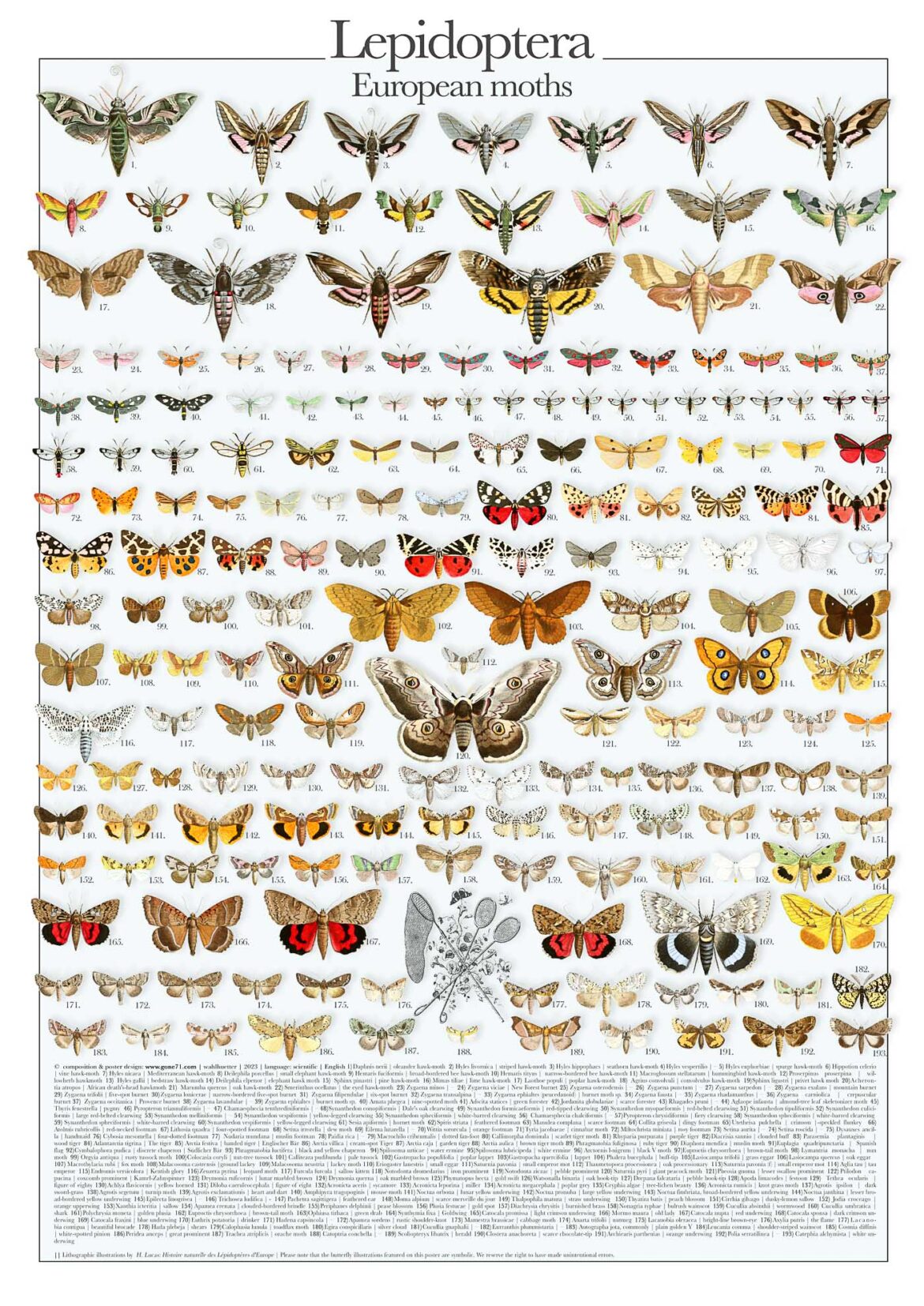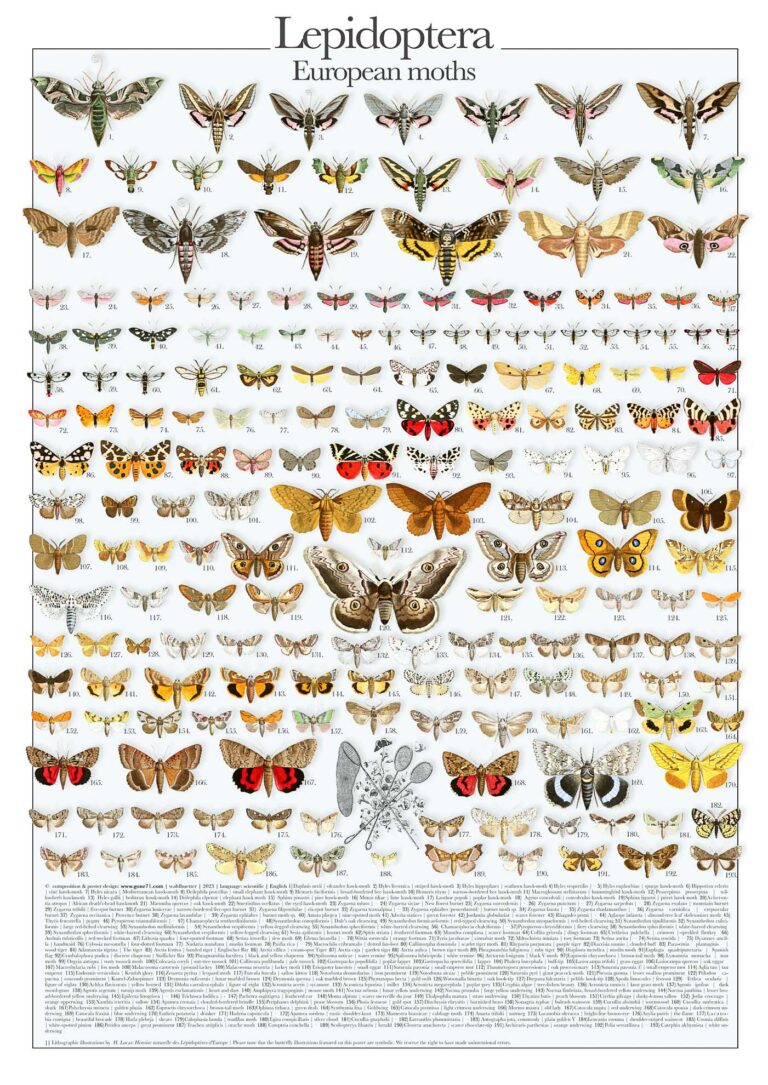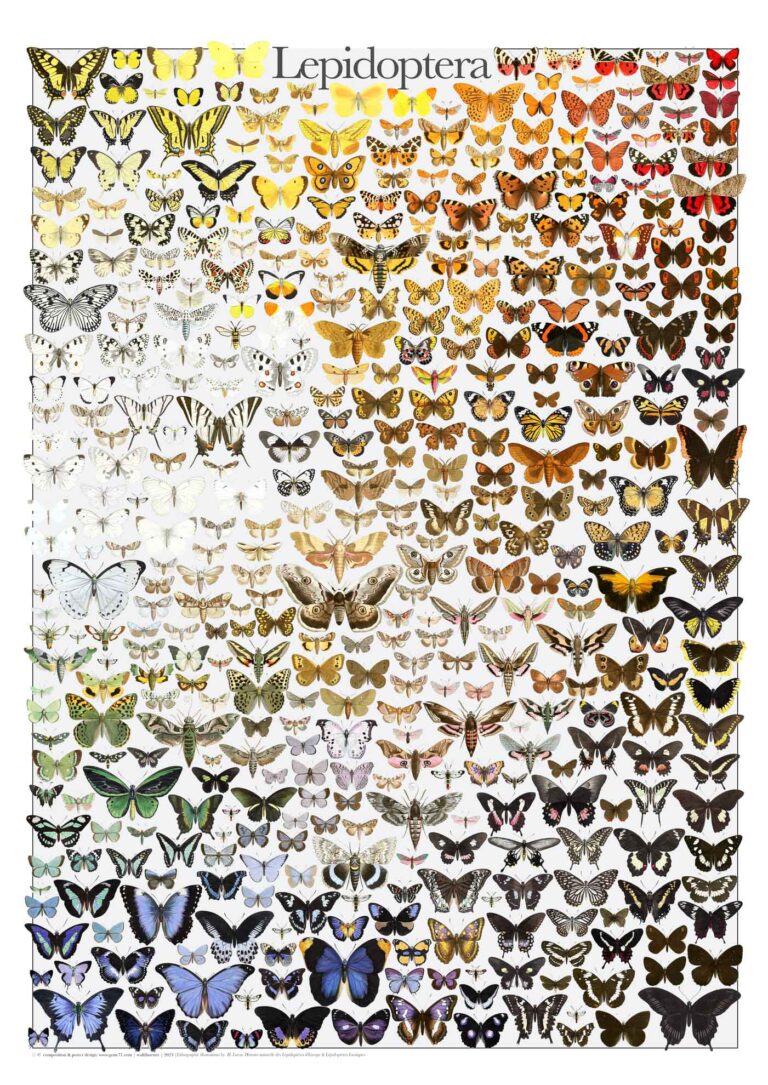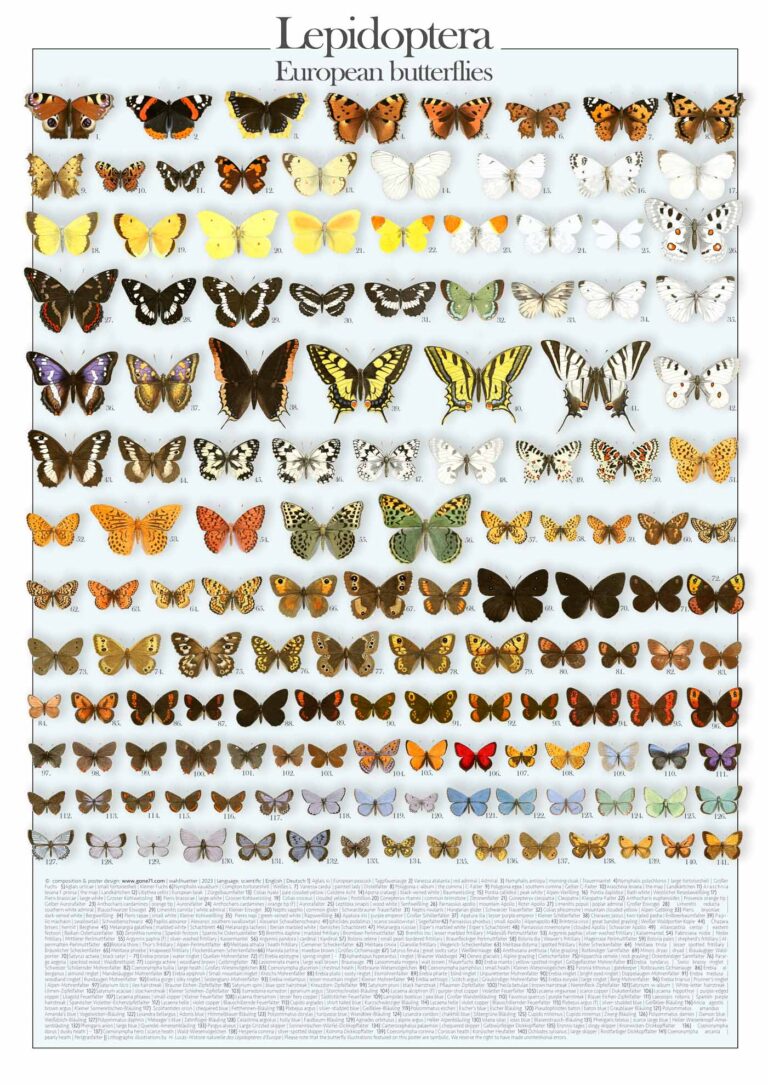This enthralling illustration features close to 200 distinct moth species, each vividly represented with accurate details, including their scientific names and English common names (if existing). This poster is a tribute to the often-overlooked nocturnal wonders that grace our European landscapes, showcasing their intricate beauty and role in our ecosystems.
Moths, a diverse and ecologically vital group of insects, often dwell in the shadows of their more colorful counterparts, the butterflies.
The world of moths
Moths constitute a diverse and ecologically significant group within the Lepidoptera order, exhibiting remarkable adaptations and interactions across European ecosystems. With over 10,000 species recorded, their taxonomic richness underscores their importance in ecological studies. Moths play pivotal roles as pollinators, herbivores, and prey, influencing plant reproduction and trophic dynamics. Their phenotypic diversity, driven by intricate genetic and physiological mechanisms, reflects adaptive responses to diverse environmental pressures. Understanding the evolutionary trajectories and ecological functions of European moths is paramount for elucidating broader patterns of biodiversity and ecosystem dynamics.
European moths | poster details
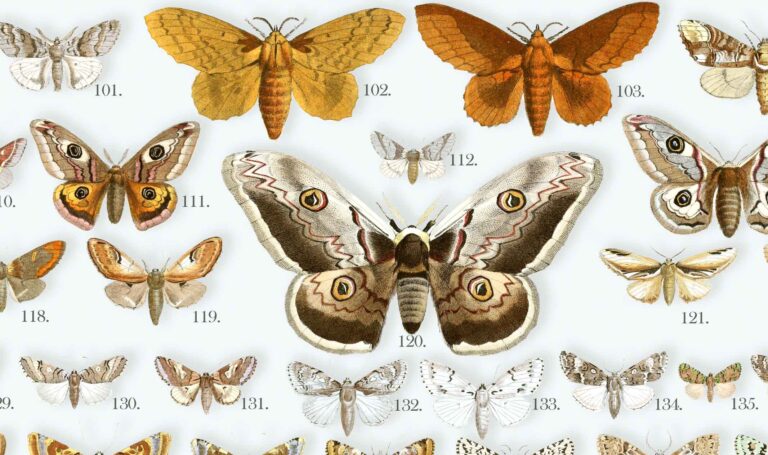
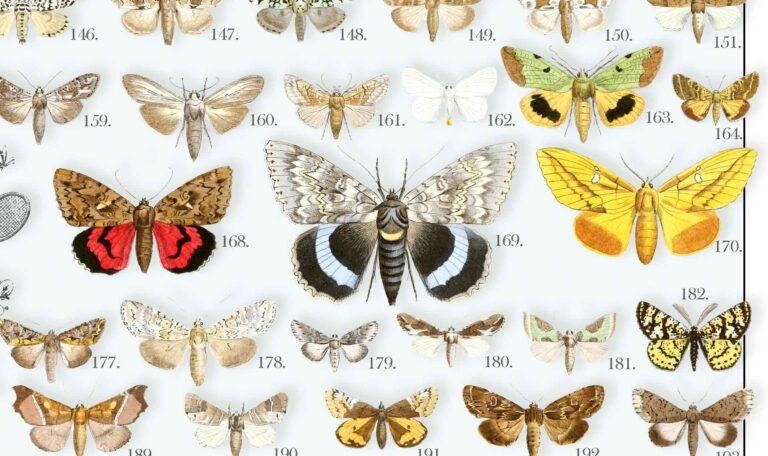
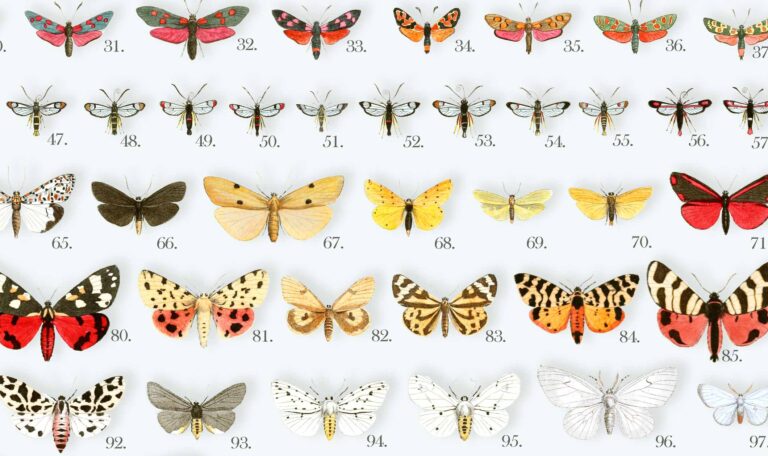
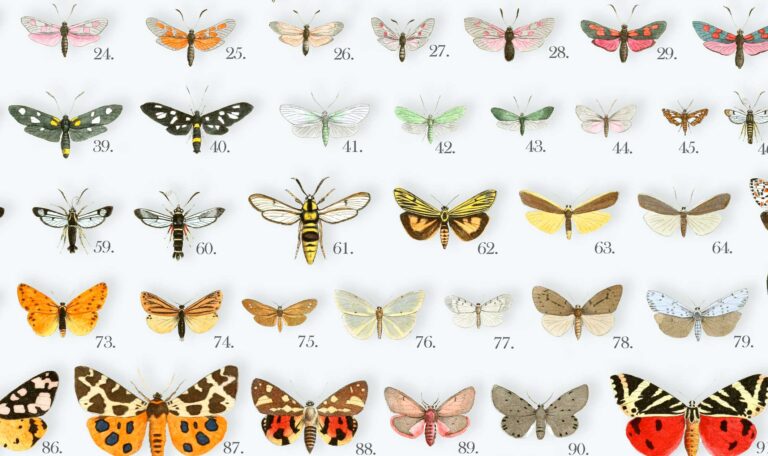
“Digital foraging”
Introducing “digital foraging”, my latest project that delves into the vast and untapped world of digital information. With a sheer endless amount of historic images and resources available online, the possibilities are endless. The artwork you see here is a perfect example of what can be achieved through “digital foraging”.
Unfortunately it takes much more than just a quick search to get the results you see here. It takes hours of research, technical know-how and a keen eye to find the right images, in the right resolution, and format. And that’s just the beginning. The real work starts with processing and manipulating the images to create something new and unique.
For me, this is what “digital foraging” is all about. The thrill of the hunt, the excitement of discovery and the satisfaction of creating something new and beautiful from what was once forgotten. It’s also a modern take on the traditional art of foraging, and I can’t wait to see what else can be found in the vast depths of the digital world.
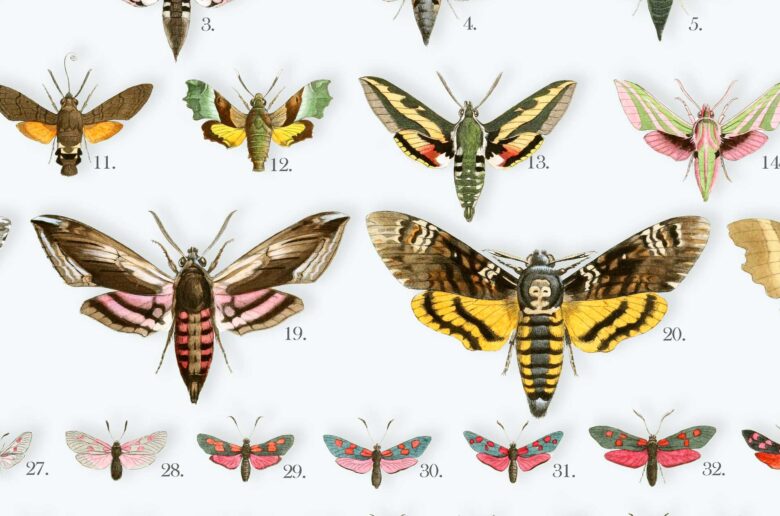
The work behind the scenes
Creating a comprehensive poster featuring 200 species of European moths is a monumental task that demands meticulous attention to detail and extensive labor. Beyond the research and restoration of historic illustrations, each individual moth must be carefully isolated, adjusted for size and orientation, and strategically placed within the composition. This process of image editing and layout design is incredibly time-consuming, often requiring days and even weeks of dedicated work to ensure the poster achieves both visual coherence and scientific accuracy. Every aspect of the poster, from the selection of beetle species to the final arrangement of illustrations, represents a labor of passion and commitment to showcasing the rich diversity of Coleoptera in a compelling and educational format.
We spent countless hours to research this composition and to carefully restaurate the lithographic images. We hope that you find joy in it if you decide to purchase a copy. You can print it out as is and display it in your living room, kitchen, office or wherever you find it fitting. There are countless options for usage and you can of course always print it in smaller sizes too.
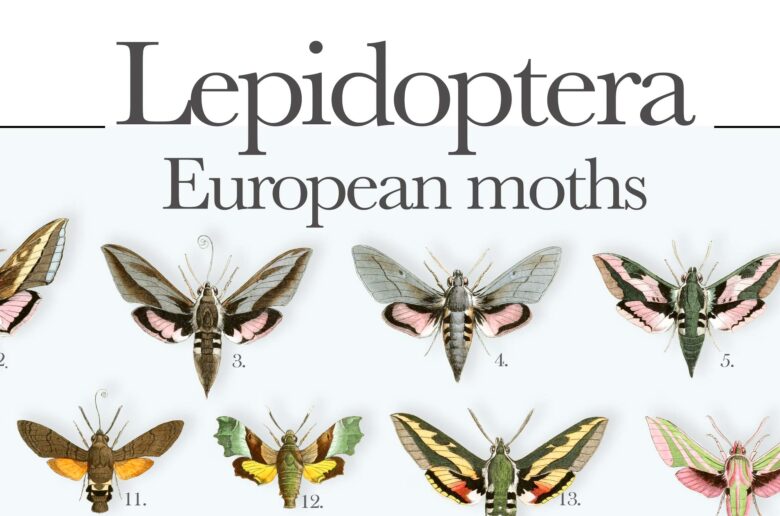
Historic lithography of moths and butterflies
The historic lithographic depictions of moths represent a pinnacle of scientific illustration from the 19th century, characterized by meticulous attention to detail and artistic precision. These lithographs, often produced through a complex process involving stone plates and chemical etching, captured the intricate morphological features of moths with scientific accuracy. The illustrations not only served as visual records of species diversity but also contributed to the classification and study of Lepidoptera taxonomy. By showcasing the subtle nuances of wing patterns, antennae morphology, and body structures, these lithographs provided invaluable insights into the evolutionary relationships and ecological adaptations of moth species. Today, they stand as enduring testaments to the intersection of art and science, preserving a legacy of entomological knowledge for future generations of researchers and enthusiasts.
The original moths images
The original drawings are often true works of art that deserve their own place on the wall. Meticulously drawn and presented, you can find a large number of such pictures in historic archives. What photos do today was solved back then with meticulously prepared illustrations. Below are some samples of these original lithographic illustrations as published.
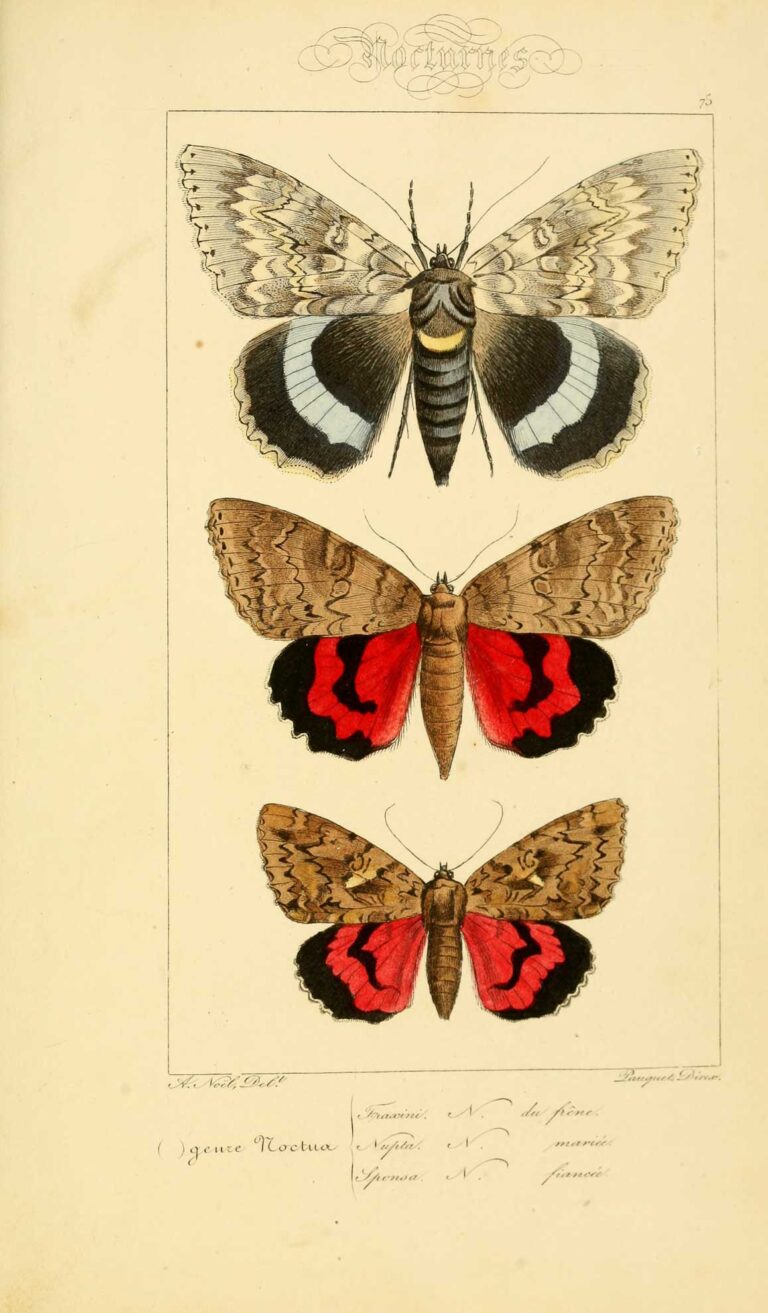
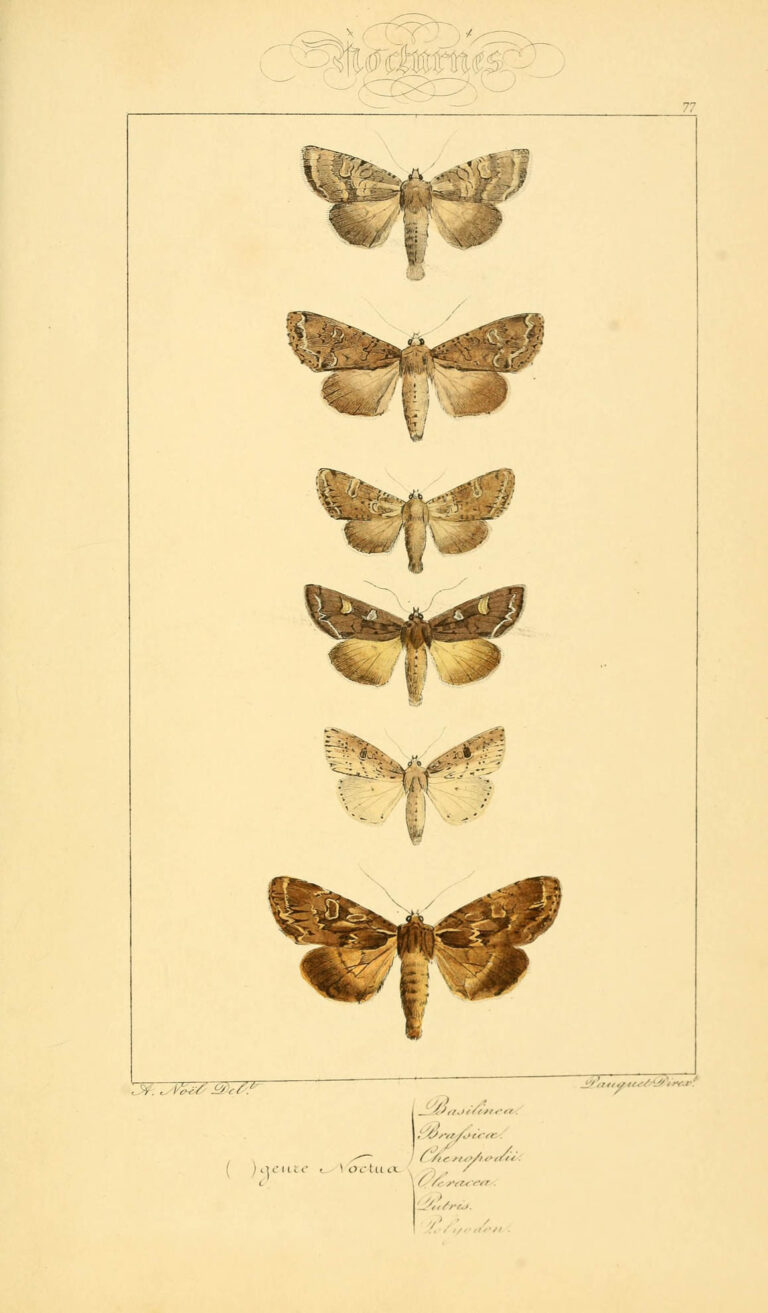
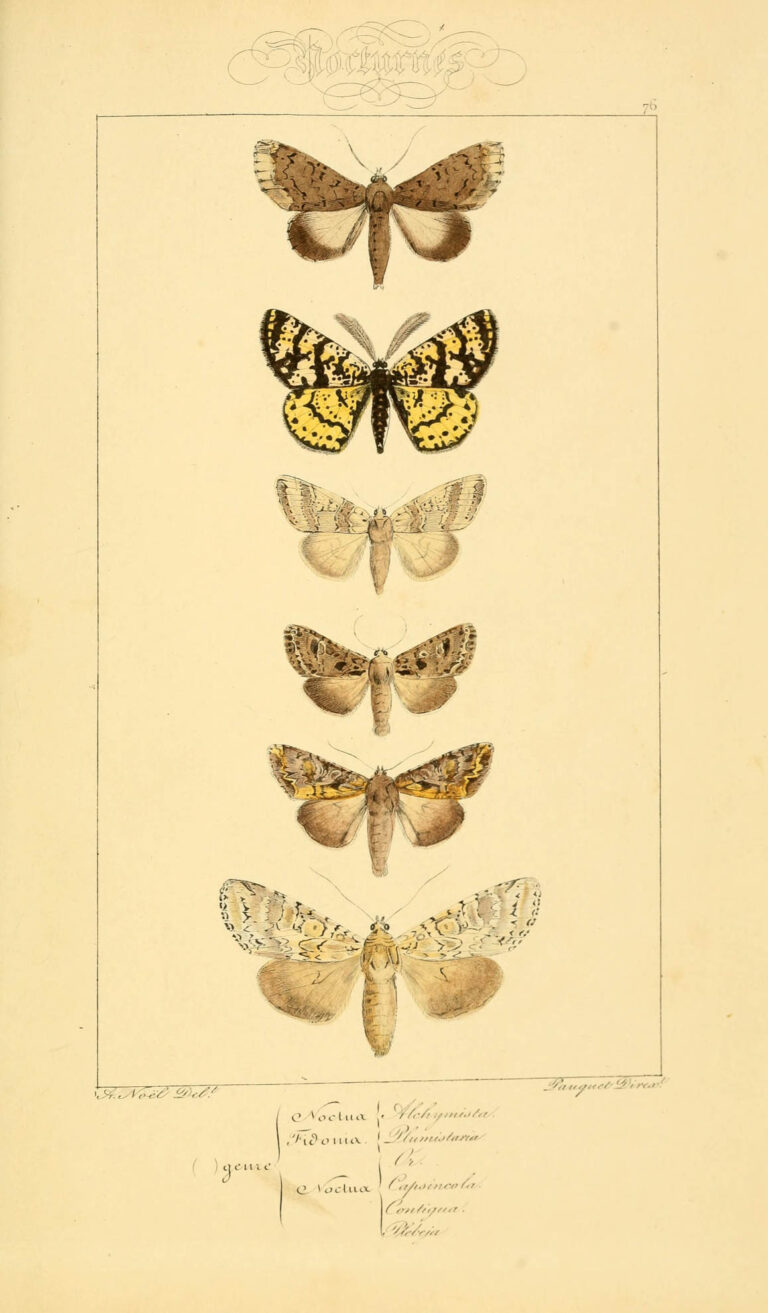
The featured species in this ‘European moth’ poster (part 1)
1) Daphnis nerii | oleander hawk-moth
2) Hyles livornica | striped hawk-moth 3) Hyles hippophaes | seathorn hawk-moth
4) Hyles vespertilio | –
5) Hyles euphorbiae | spurge hawk-moth
6) Hippotion celerio | vine hawk-moth
7) Hyles nicaea | Mediterranean hawk-moth
8) Deilephila porcellus | small elephant hawk-moth
9) Hemaris fuciformis | broad-bordered bee hawk-moth
10) Hemaris tityus | narrow-bordered bee hawk-moth
11) Macroglossum stellatarum | hummingbird hawk-moth
12) Proserpinus proserpina | willowherb hawkmoth
13) Hyles gallii | bedstraw hawk-moth
14) Deilephila elpenor | elephant hawk moth
15) Sphinx pinastri | pine hawk-moth
16) Mimas tiliae | lime hawk-moth
17) Laothoe populi | poplar hawk-moth
18) Agrius convolvuli | convolvulus hawk-moth
19) Sphinx ligustri | privet hawk moth
20) Acherontia atropos | African death’s-head hawkmoth
21) Marumba quercus | oak hawk-moth
22) Smerinthus ocellatus | the eyed hawk-moth
23) Zygaena minos | –
24) Zygaena viciae | New Forest burnet
25) Zygaena osterodensis | –
26) Zygaena punctum | –
27) Zygaena sarpedon | –
28) Zygaena exulans | mountain burnet
29) Zygaena trifolii | five-spot burnet
30) Zygaena lonicerae | narrow-bordered five-spot burnet
31) Zygaena filipendulae | six-spot burnet
32) Zygaena transalpina | –
33) Zygaena ephialtes (peucedanoid) | burnet moth sp.
34) Zygaena fausta | –
35) Zygaena rhadamanthus | –
36) Zygaena carniolica | crepuscular burnet
37) Zygaena occitanica | Provence burnet
38) Zygaena lavandulae | –
39) Zygaena ephialtes | burnet moth sp.
40) Amata phegea | nine-spotted moth
41) Adscita statices | green forester
42) Jordanita globulariae | scarce forester
43) Rhagades pruni | –
44) Aglaope infausta | almond-tree leaf skeletonizer moth
45) Thyris fenestrella | pygmy
46) Pyropteron triannuliformis | –
47) Chamaesphecia tenthrediniformis | –
48) Synanthedon conopiformis | Dale’s oak clearwing
49) Synanthedon formicaeformis | red-tipped clearwing
50) Synanthedon myopaeformis | red-belted clearwing
51) Synanthedon tipuliformis
52) Synanthedon culiciformis | large red-belted clearwing
53) Synanthedon melliniformis | –
54) Synanthedon vespiformis | yellow-legged clearwing
55) Synanthedon spheciformis | white-barred clearwing
56) Chamaesphecia chalciformis | –
57) Pyropteron chrysidiformis | fiery clearwing
58) Synanthedon spheciformis | white-barred clearwing
59) Synanthedon spheciformis | white-barred clearwing
60) Synanthedon vespiformis | yellow-legged clearwing
61) Sesia apiformis | hornet moth
62) Spiris striata | feathered footman
63) Manulea complana | scarce footman
64) Collita griseola | dingy footman
65) Utetheisa pulchella | crimson |-speckled flunkey
The featured species in this ‘European moth’ poster (part 2)
66) Atolmis rubricollis | red-necked footman
67) Lithosia quadra | four-spotted footman
68) Setina irrorella | dew moth
69) Eilema lutarella | –
70) Wittia sororcula | orange footman
71) Tyria jacobaeae | cinnabar moth
72) Miltochrista miniata | rosy footman
73) Setina aurita | –
74) Setina roscida | –
75) Dysauxes ancilla | handmaid
76) Cybosia mesomella | four-dotted footman
77) Nudaria mundana | muslin footman
78) Paidia rica | –
79) Macrochilo cribrumalis | dotted fan-foot
80) Callimorpha dominula | scarlet tiger moth
81) Rhyparia purpurata | purple tiger
82) Diacrisia sannio | clouded buff
83) Parasemia plantaginis | wood tiger
84) Atlantarctia tigrina | The tiger
85) Arctia festiva | banded tiger | Englischer Bär
86) Arctia villica | cream-spot Tiger
87) Arctia caja | garden tiger
88) Arctia aulica | brown tiger moth
89) Phragmatobia fuliginosa | ruby tiger
90) Diaphora mendica | muslin moth
91) Euplagia quadripunctaria | Spanish flag
92) Cymbalophora pudica | discrete chaperon | Südlicher Bär
93) Phragmatobia luctifera | black and yellow chaperon
94) Spilosoma urticae | water ermine
95) Spilosoma lubricipeda | white ermine
96) Arctornis l-nigrum | black V moth
97) Euproctis chrysorrhoea | brown-tail moth
98) Lymantria monacha | nun moth
99) Orgyia antiqua | rusty tussock moth
100) Colocasia coryli | nut-tree tussock
101) Calliteara pudibunda | pale tussock
103) Gastropacha quercifolia | lappet
104) Phalera bucephala | buff-tip
105) Lasiocampa trifolii | grass eggar
106) Lasiocampa quercus | oak eggar
107) Macrothylacia rubi | fox moth
108) Malacosoma castrensis |ground lackey
109) Malacosoma neustria | lackey moth
110) Eriogaster lanestris | small eggar
111) Saturnia pavonia | small emperor mot
112) Thaumetopoea processionea | oak processionary
113) Saturnia pavonia (f) | small emperor mot
114) Aglia tau | tau emperor
115) Endromis versicolora | Kentish glory
116) Zeuzera pyrina | leopard moth
117) Furcula furcula | sallow kitten
118) Notodonta dromedarius | iron prominent
119) Notodonta ziczac | pebble prominent
120) Saturnia pyri | giant peacock moth
121) Pheosia gnoma | lesser swallow prominent
122) Ptilodon capucina | coxcomb prominent | Kamel-Zahnspinner
123) Drymonia ruficornis | lunar marbled brown
124) Drymonia querna | oak marbled brown
125) Phymatopus hecta | gold swift
126) Watsonalla binaria | oak hook-tip
127) Drepana falcataria | pebble hook-tip
128) Apoda limacodes | festoon
129) Tethea ocularis | figure of eighty
130) Achlya flavicornis | yellow horned
The featured species in this ‘European moth’ poster (part 3)
131) Diloba caeruleocephala | figure of eight
132) Acronicta aceris | sycamore
133) Acronicta leporina | miller
134) Acronicta megacephala | poplar grey
135) Cryphia algae | tree-lichen beauty
136) Acronicta rumicis | knot grass moth
137) Agrotis ipsilon | dark sword-grass
138) Agrotis segetum | turnip moth
139) Agrotis exclamationis | heart and dart
140) Amphipyra tragopoginis | mouse moth
141) Noctua orbona | lunar yellow underwing
142) Noctua pronuba | large yellow underwing
143) Noctua fimbriata, broad-bordered yellow underwing
144) Noctua janthina | lesser broad-bordered yellow underwing
145) Epilecta linogrisea | –
146) Trichosea ludifica | –
147) Pachetra sagittigera | feathered ear
148) Moma alpium | scarce merveille du jour
149) Thalpophila matura | straw underwing
150) Thyatira batis | peach blossom
151) Cirrhia gilvago | dusky-lemon sallow
152) Jodia croceago | orange upperwing
153) Xanthia icteritia | sallow
154) Apamea crenata | clouded-bordered brindle
155) Periphanes delphinii | pease blossom
156) Plusia festucae | gold spot
157) Diachrysia chrysitis | burnished brass
158) Nonagria typhae | bulrush wainscot
159) Cucullia absinthii | wormwood
160) Cucullia umbratica | shark
161) Polychrysia moneta | golden plusia
162) Euproctis chrysorrhoea | brown-tail moth
163) Ophiusa tirhaca | green drab
164) Synthymia fixa | Goldwing
165) Catocala promissa | light crimson underwing
166) Mormo maura | old lady
167) Catocala nupta | red underwing
168) Catocala sponsa | dark crimson underwing
169) Catocala fraxini | blue underwing
170) Euthrix potatoria | drinker
171) Hadena capsincola | –
172) Apamea sordens | rustic shoulder-knot
173) Mamestra brassicae | cabbage moth
174) Anarta trifolii | nutmeg
175) Lacanobia oleracea | bright-line brown-eye
176) Axylia putris | the flame
177) Lacanobia contigua | beautiful brocade
178) Hada plebeja | shears
179) Calophasia lunula | toadflax moth
180) Egira conspicillaris | silver cloud
181) Cucullia gnaphalii | –
182) Eurranthis plummistaria | –
183) Autographa jota, commonly | plain golden Y
184) Leucania comma | shoulder-striped wainscot
185) Cosmia diffinis | white-spotted pinion
186) Peridea anceps | great prominent
187) Trachea atriplicis | orache moth 188) Catoptria conchella | –
189) Scoliopteryx libatrix | herald
190) Clostera anachoreta | scarce chocolate-tip
191) Archiearis parthenias | orange underwing
192) Polia serratilinea | –
193) Catephia alchymista | white underwing
Find some inspiration here
↓↓↓

